June 3, 2008
A surface such as water (or glass) provides a natural way to create a layered image. The partial reflection allows superposition of images from different sources, not otherwise achievable in camera. But why care about layers? In my last post I gave them credit for a “dreamy” or “contemplative” way to show more than one scene in a single image. But that’s not pushing it very far. What might be the significance of layering?
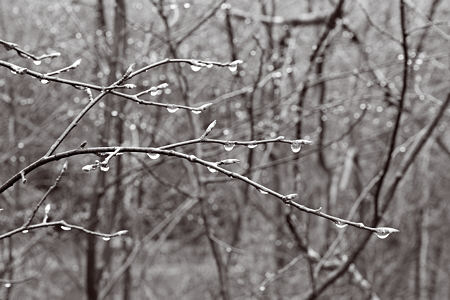
Any visual scene has multiple associations and interpretations, even for a single person. Multiple layers in an image can suggest this. They may also stimulate further reflection, prompted rather than inhibited by their indistinctness. The visual layering stands as analogy to the overlay of memories that might be connected, directly or indirectly, to a place.
The notion of layering is one I’ve come to recognize in quite a few of my images. It seems to apply when there are clearly separable zones of distance, and an obstruction of a back layer by a forward layer is prominent, forcing recognition of the zones. Zones may be distinguished also by focus. By way of experiment, the two images below of new aspen leaves have focus on the middle and forward layers, respectively, of an essentially three-layer scene.
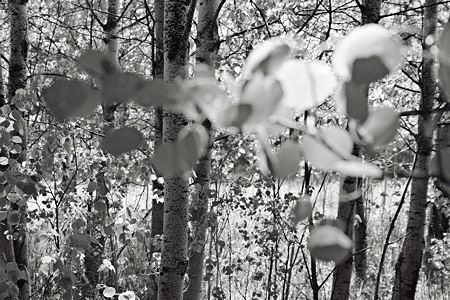
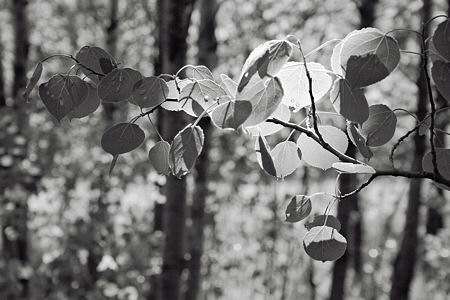
I like both images. The first seems less conventional, with the blurred leaves literally in your face (imagining yourself at the camera position). The second may be more satisfying because it emphasizes the delicate detail in the “default” subject identified by its bright lighting, and softens out the messy detail elsewhere.
This type of layering can also function to convey multiple meanings. For example, here’s an idyllic opening in the woods, and you yourself are observing from back among the trees, perhaps even hiding yourself, perhaps waiting for …
Filed in: Experiments,Musings
Comments closed
May 27, 2008
They said two days ago the rivers were cresting, but I’m sure the water was higher today yesterday. The flow must be at least 10 times what it was a week ago. At Limestone Creek the approach trail was under water. So was most of what I’m calling Limestone point, once I’d made my way there, feet still dry thanks to various trunks and branches that made serviceable (though slippery) boardwalks.
This whole neck of the woods had become a swamp, and delightful it was. The shallowest puddle has a reflective surface, and even a gray day—in fact, better a gray day—offers all sorts of visual play. The carpet of leaf litter was visible not in the light, but only in reflections too dark to show their source.
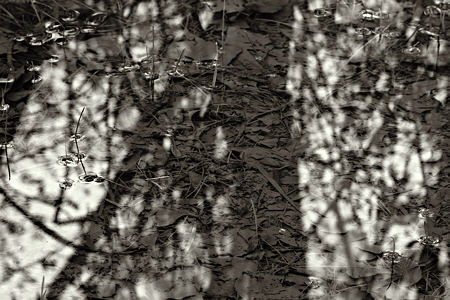
I was surprised by a patch of bright sky lying in the bend of an inundated path.
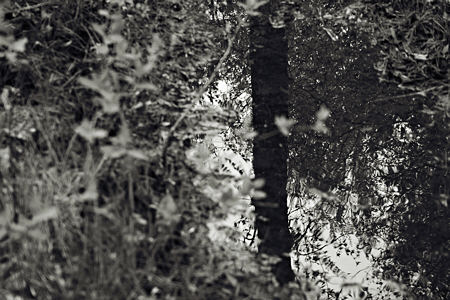
Intervening branches cross-hatched ghostly echoes in an overflow stream course.
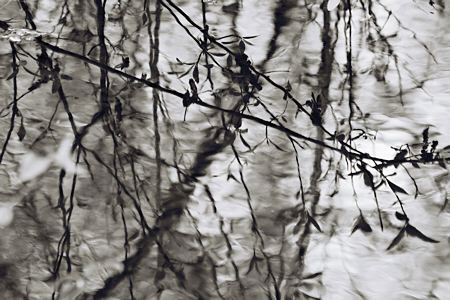
The artistic significance of the water was the opportunity to explore the emotional influence of texture. Locating the focus at the water, beyond it at reflected elements, or before it at the nearest objects, allows manipulation of the viewer’s attention. Though technically similar to the depth of field experiment discussed before, there seems to be a difference in that those images were easy to read, appearing quite plausible even if slightly unusual. Reflections tend to be more of a surprise; we’re startled by some discrepancy and it takes us a moment to figure out the spatial relationships. The first impression can be surreal, like tree trunks with the texture of leaves, or a clear sky on a dirt path.
Is it always the unexpected that leads to new awareness? At any rate, I can say that the spots pictured above I will see differently from now on. They each have a memory attached that didn’t exist before, and wouldn’t now if I didn’t enjoy gray days and walking on logs, and if it hadn’t snowed and rained like it has here lately.
Filed in: Musings
Comments closed





